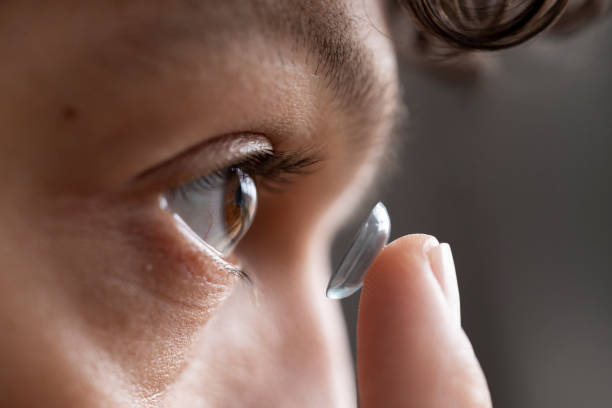
Scleral Lens Blog

The article discusses the myths surrounding scleral lenses and how they can be beneficial for many patients. It debunks the myths that scleral lenses are hard to fit, expensive, a lens of last resort, a niche lens for a small population, and that we don't know their long-term effects on the eye. The article argues that scleral lenses are easy to fit, affordable, can be used for various conditions, are suitable for a wide range of patients, and have been shown to be safe for long-term wear. It encourages practitioners to incorporate scleral lenses into their practices to benefit more patients.

The passage debunks three common myths about keratoconus, a condition that thins and bulges the cornea, affecting vision.
Myth 1: Keratoconus leads to blindness - False: While vision can worsen, complete blindness doesn't occur.
Myth 2: Contact lenses stop keratoconus progression - False: Contact lenses improve vision but don't prevent the condition from getting worse. Poorly fitted lenses can even make it worse.
Myth 3: Only young people get keratoconus - False: Though it usually develops before 30, diagnosis can happen later in life as well.
The text concludes by encouraging readers to learn more about managing keratoconus and potentially switch to scleral lenses for improved comfort and vision.

If you wear contacts, there's a good chance you take measures to keep your eyes and lenses as clean as possible. Unfortunately, certain infections are inevitable, no matter how much care you put into your eyes.
A very common issue is a sty. This is a minor infection on either the inside or outside of your eye. Although most styes are harmless, it's important to take steps to treat the problem as soon as possible. These steps could involve your contact lenses.
The first question you may ask is, "Can I wear contacts with a sty?" That's why we've put together this guide with everything you need to know.
Read more!

While a contact lens can’t get lost behind your eye, one can get stuck in your eye. While it's easy to insert and remove contact lenses after sufficient practice, occasionally, you may have one that seems stuck.
The first time this happens, you might be alarmed. But don’t be. Read on to learn how to remove a stuck contact lens in a safe manner, and you’ll be prepared if, and when, you find yourself dealing with a stuck contact.
How to Remove a Stuck Soft Contact Lens -
Before you attempt to remove your stuck contact lens, stop! Aren’t you forgetting something? Yes, you need to wash your hands. Do so in a thorough fashion and dry your hands on a lint-free towel.
You want to make sure that contaminants don't add to the existing issue. Once you do, then you’re ready to check out where your contact is.
Read more!

Did you know…?
Orthokeratology, ortho-k for short, is the use of overnight contacts to correct nearsightedness.
Nearsightedness develops when the shape of the cornea is too curved. This alters the trajectory of incoming light to the eye and results in an unfocused image. While you are asleep, these specialized gas permeable (GP) contact lenses reshape your cornea so that you wake up with perfect vision the next day.
The best candidates for ortho-k are people with mild to moderate myopia (nearsightedness). Even more so if you are ineligible for laser eye surgery. Orthokeratology enables you to maintain improved daytime vision without glasses or contacts. Moreover, the process is reversible, so you can start and stop at anytime.
Overnight contact lenses aim to correct refractive errors, but can also help delay the progression of myopia. This is especially valuable for early onset of nearsightedness.
The risk of developing high myopia is greater when nearsightedness begins in childhood or during puberty. People with high myopia are more susceptible to age-related eye conditions, like glaucoma. Early implementation of orthokeratology can reduce the prevalence of high myopia.
It goes without saying, but ortho-k is not suitable for everyone. If you already suffer from high myopia, this process is unlikely to make a difference in your vision. The best way to find out if you are a good candidate is to consult with your eye care professional.

Eyeglasses vs. Contact Lenses: The Ultimate Battle! Pick a side, because this debate is heating up! Whether you're team eyeglasses or team contact lenses, there's no denying the passion behind each choice. But wait, there's more! Discover the hidden gems and pitfalls of both options.
